Chemmeen Varutharachathu (Kerala Prawns Curry with Roasted Coconut) is one of Kerala’s most flavourful prawn curry variants, made with roasted coconut.
As the name suggests, it uses Kerala’s traditional cooking method called varutharacha, which means "roasted and ground."Roasting the coconut and spices this way gives the curry its smoky depth and true Kerala flavour.
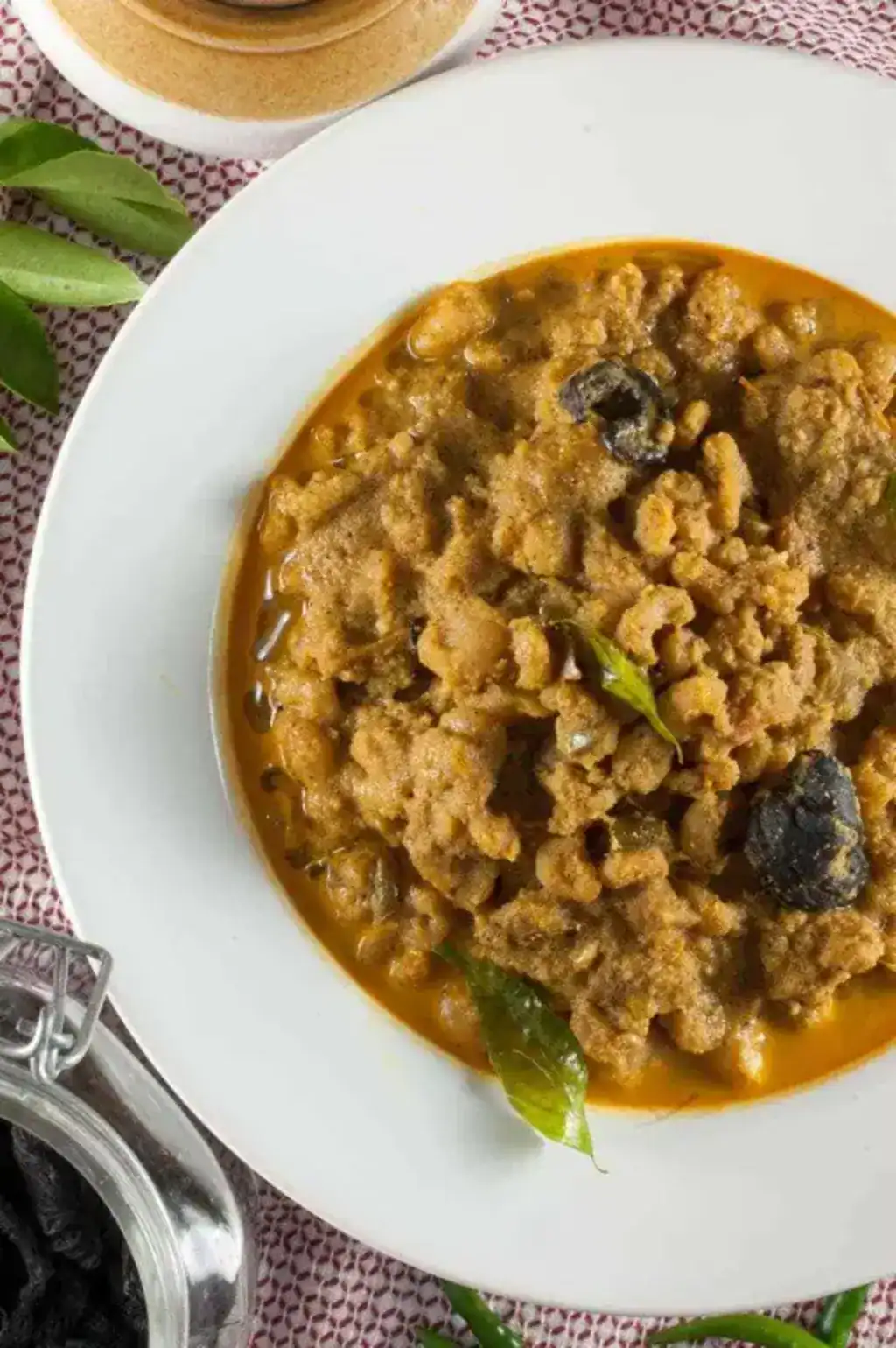
You can easily make it at home. Scroll down for ingredients, step-by-step instructions, serving ideas, and proper storage tips.
Jump to:
- What is Chemmeen Varutharacha Curry?
- Why You'll Love This Recipe?
- Recipe Ingredients
- Variations to Try
- How To Make Prawns Varutharacha Curry (Step-by-Step Guide)
- Tips And Tricks
- Serving Suggestions
- Storage Instructions
- Frequently Asked Questions (FAQ)
- More Kerala Style Shrimp Recipes To Try
- Chemmeen Varutharachathu (Kerala Prawns Curry with Roasted Coconut)
What is Chemmeen Varutharacha Curry?
Chemmeen Varutharacha Curry is a Kerala-style prawn curry made using the traditional varutharacha method. In this technique, coconut and spices are dry-roasted and ground into a thick paste. This roasted mix is added to the curry base along with the prawns, giving the dish its unique flavour.
Roasting the coconut brings a slightly sweet flavour and releases natural oils that blend into the curry. Spices are added after, so they don’t burn, and roast just enough to boost flavour. All together, this gives the curry its colour, nutty smell, and thicker consistency.
The varutharacha method is common in many Kerala dishes. It’s used in chicken, beef, mutton, and even some vegetable curries.
You can check our Varutharacha Chicken Curry Recipe to see how this base works in meat dishes. We can also add jeerakam, star anise, and other whole spices to the base for more depth, especially in meat curries.
Why You'll Love This Recipe?
That natural sweetness and nuttiness from roasted coconut makes it different from regular chemmeen curry. As the coconut roasts, its own oil slowly comes out and blends into the curry. The spices are roasted just enough to boost flavour without burning.
Cocum adds sourness. It brings that puli taste we love in Kerala seafood curries. It balances the spice and makes the curry complete. All this together is why we love this curry.
Recipe Ingredients
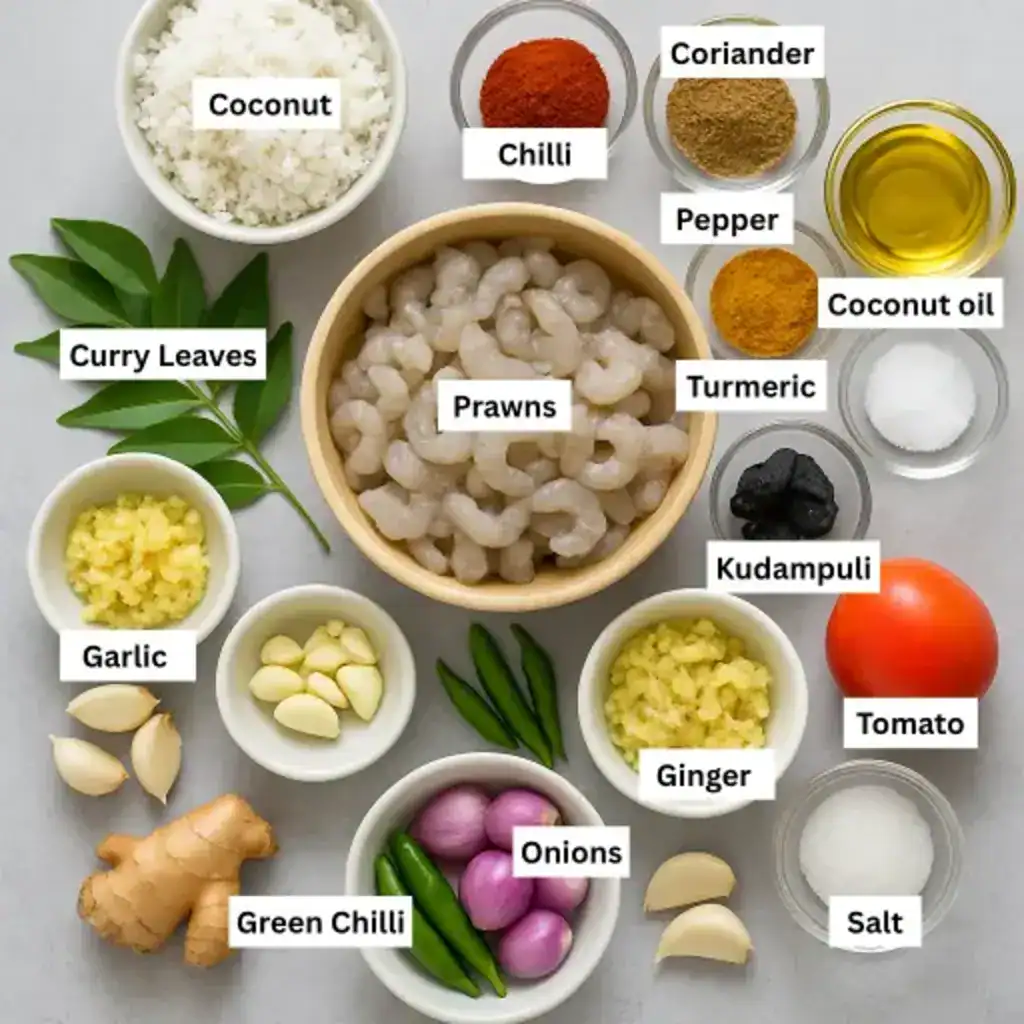
1. Prawns (Chemmeen)
Use small or medium prawns. Deshell and devein properly, skipping this can cause stomach issues. Frozen is okay, but fresh is always better.
2. Cocum / Kudampuli (Malabar Tamarind)
This is a sun-dried sour fruit, black in colour with a leathery texture. Common in Kerala fish curries, it gives that puli taste and adds depth to the gravy.
3. Coconut and Powdered Spices
Grated coconut, chilli powder, coriander powder, turmeric, and pepper powder.
4. Other Ingredients
Shallots, ginger, garlic, green chilli, tomato, salt, and coconut oil. Exact quantities and nutritional details are given in the recipe card below.
Variations to Try
This curry base works well with many proteins, not just prawns. You can use chicken, mutton, beef, fish, egg, or even vegetables. The method stays the same, only the cooking time changes.
For beef or mutton, pressure cook first and then add. Chicken cooks faster, so you can add it directly to the gravy. For egg, boil and add at the end.
You can also add drumsticks or potato along with prawns for extra flavour. Cocum can be swapped with manga puli (sun-dried raw mango), raw mango, or ordinary tamarind. Each gives a slightly different kind of sour puli taste.
If you want a more tangy and umami-rich chemmeen dish, try our Chemmeen Achar (Prawn Pickle) Recipe too.
How To Make Prawns Varutharacha Curry (Step-by-Step Guide)
- Soak cocum (kudampuli) in 3 tablespoons of lukewarm water for 15 - 20 minutes.
- Prepare the coconut masala - Heat 2-3 tablespoons of oil in a heavy-bottomed pan. Fry grated coconut until brownish. Make sure that you don't burn the coconut.
- Reduce the flame to a minimum. Add coriander powder, chilli powder, turmeric powder, and pepper powder. Fry the masala powders for a couple of minutes. Add oil if needed.
- Switch it off. Keep it aside and let it cool down.
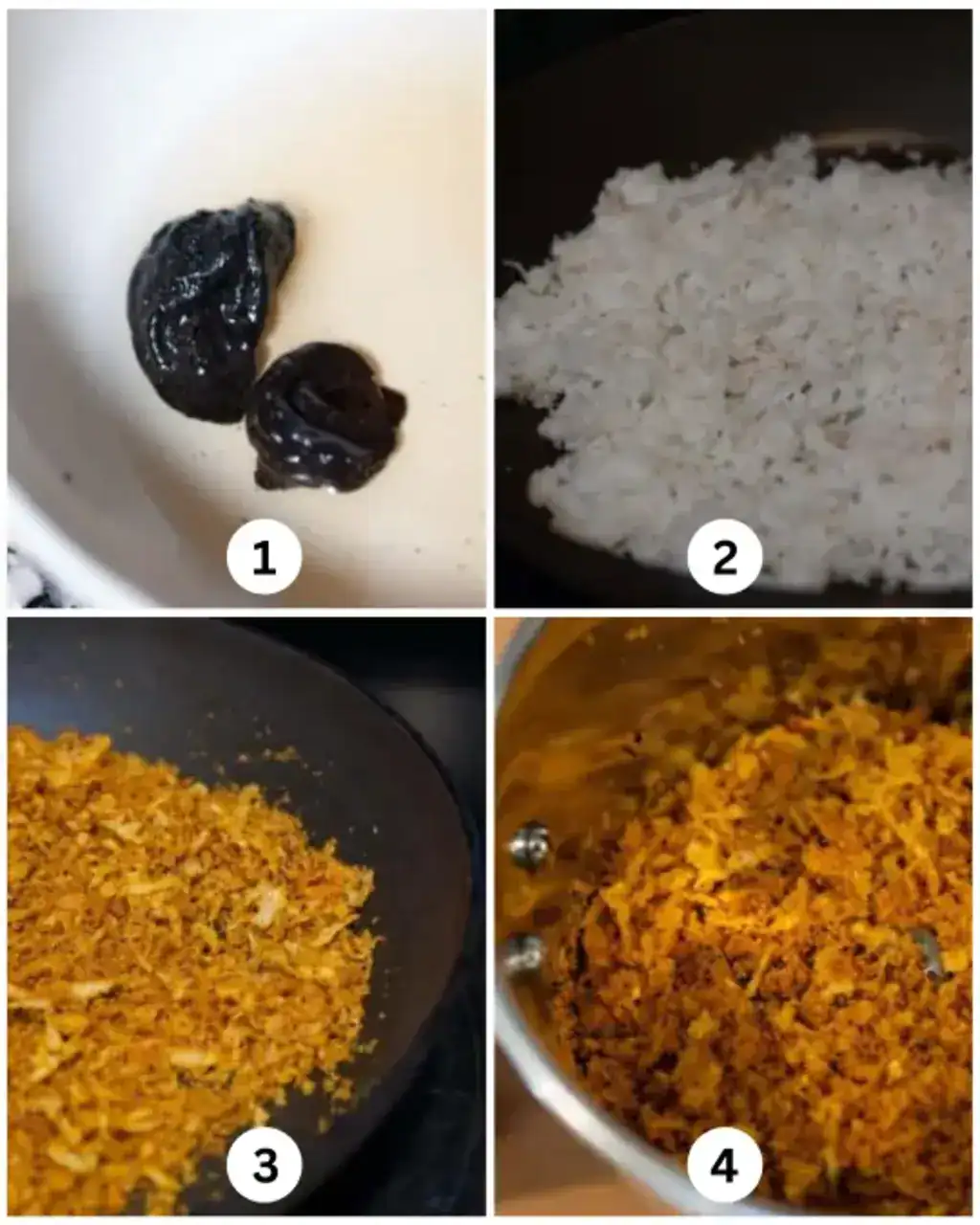
- Add just sufficient water and grind it to a smooth paste. Add enough salt to the masala paste.
- Clean shrimp well. Chop shallots / small onions. Grind ginger and garlic into a fine paste. Slice the tomato. Heat oil in a pan, splutter the mustard seeds. Add chopped shallots, ginger, garlic, green chilli, and curry leaves. Cook it on medium heat till it's sautéed well. Add oil, if needed.
- Add sliced tomato. Mix it well and close it for around 5 minutes until it gets cooked.
- Add soaked cocum (kudampuli) with the water to the above mixture. Add another ½ cup of water and enough salt to the pan. Bring this to a boil and then add cleaned prawn pieces. Mix it and immerse the shrimp in the gravy. Cover the pan and cook it.
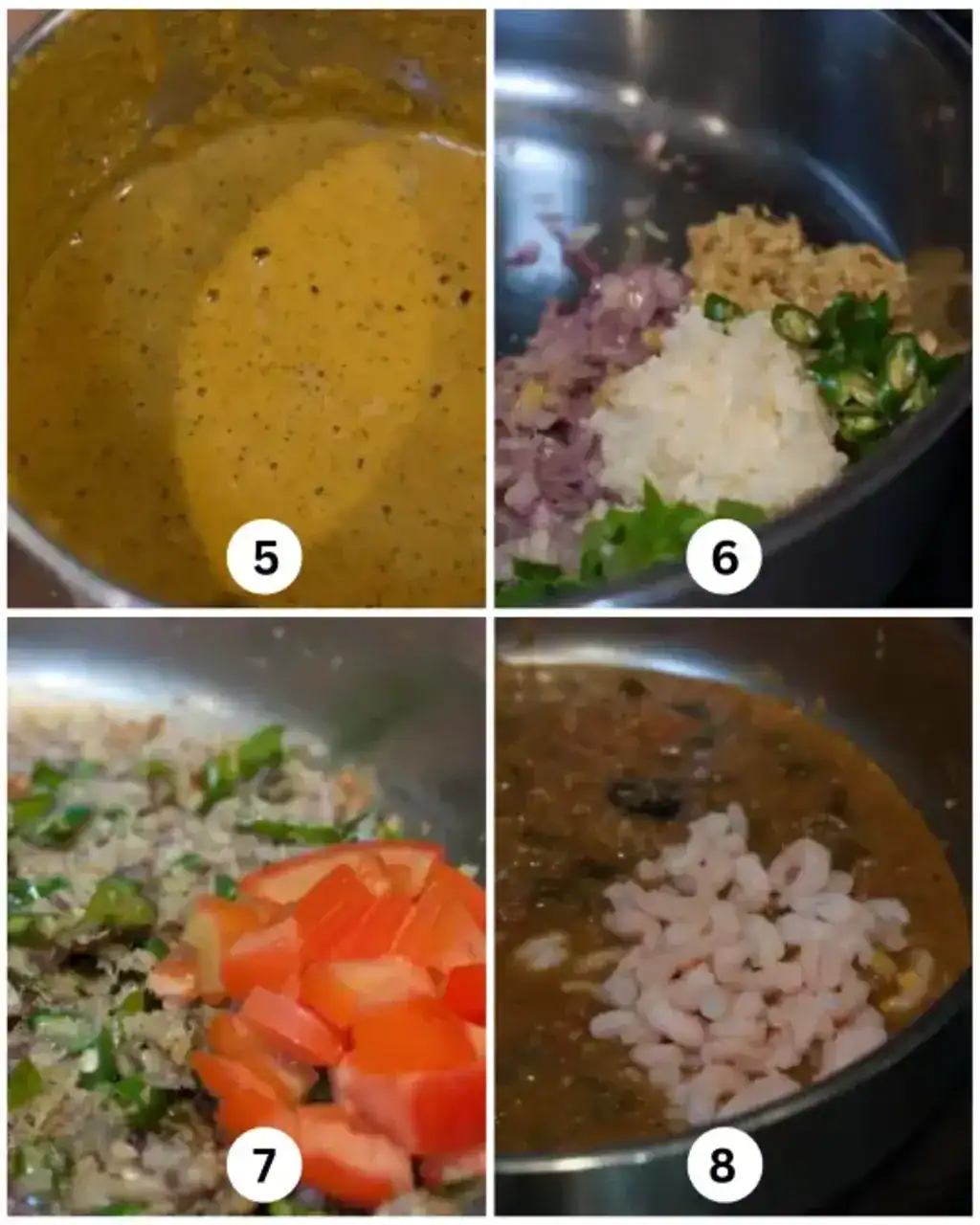
- Once the prawns are half-cooked, add the ground roasted coconut masala paste.
- Swirl the pan and mix it. It would probably be 5 - 7 minutes after adding the prawns.
- In another small pan, heat a little coconut oil. Add curry leaves and let them splutter.
- Switch off the pan once it is cooked and the gravy has the desired consistency. Garnish with fried curry leaves.
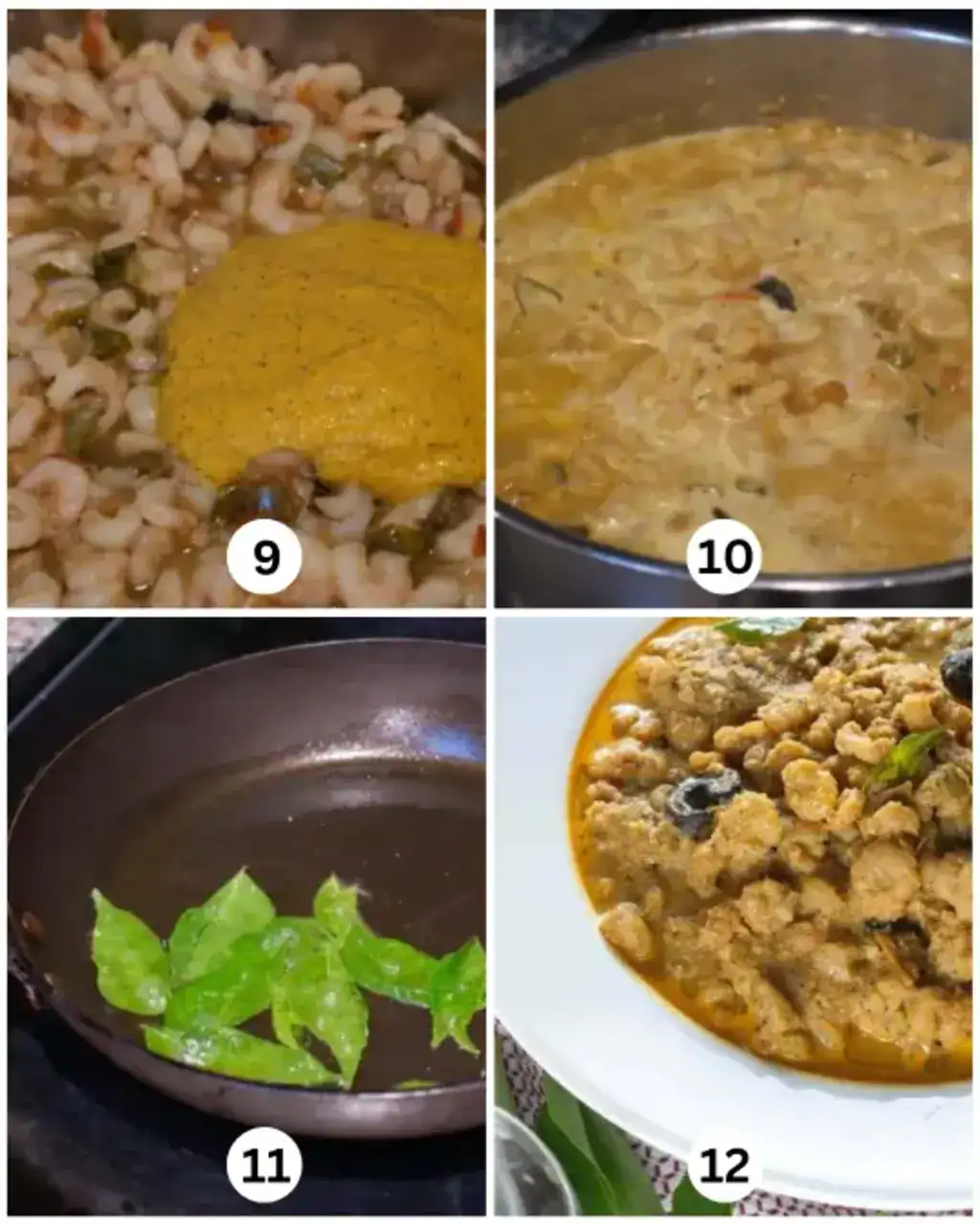
If you prefer a spicier prawn masala without roasted coconut, try our Nadan Konju Masala Recipe.
Tips And Tricks
- Slow-roast the coconut. Don’t rush. Keep the flame low to medium. If you over-roast or under-roast, the taste of the curry will change completely.
- Soak the kudampuli in water before using. It brings that deep puli flavour after cooking. If using regular tamarind, you may need a bit more.
- Try making this curry in a clay pot (manchatti) for better flavour. Just make sure the pot is well cleaned and properly seasoned.
Serving Suggestions
Best paired with pathiri (thin rice flour flatbread) or orotti (thicker roasted rice roti). It also goes well with chapati. Soaking chapati in the gravy gives a different taste and texture.
This curry also pairs well with appam, idiyappam (string hoppers), and puttu (steamed rice flour cakes).
With rice, it goes well with matta rice, basmati rice, or ghee rice. For a full Kerala-style meal, serve with matta rice, cabbage/ beans thoran, some pappadam, and finish with Chemeen (Prawns) Fry on the side.
Storage Instructions
Chemmeen Varutharacha Curry tastes even better the next day. The gravy thickens, and the flavour deepens as the cocum sourness sets in. Reheat gently when needed.
Store in a clean, airtight container in the fridge. It stays good for 2 to 3 days.
While you can freeze this curry, it's not recommended because the prawns can become tough and lose their fresh aroma.
Frequently Asked Questions (FAQ)
The coconut should turn golden brown and give off a strong nutty smell. Roast it on low flame and often stir to avoid burning.
Spices burn faster than coconut. Always add them only after the coconut is roasted. Some people even switch off the flame before adding. Burnt spices turn bitter and can spoil the whole curry.
More Kerala Style Shrimp Recipes To Try
I’d love to hear your thoughts if you have tried this! Please leave a ⭐️ rating and a comment below. Don’t forget to share your photos on Instagram and tag @a_little_bit_of_spice.
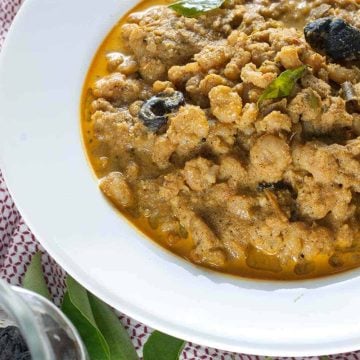
Chemmeen Varutharachathu (Kerala Prawns Curry with Roasted Coconut)
Ingredients
- ½ kilogram Prawns
Coconut masala
- ½ cup grated coconut
- 1 ½ teaspoon chilli powder
- 1 ½ teaspoon coriander powder
- ½ teaspoon turmeric powder
- ½ teaspoon pepper powder
Gravy
- 1 number Cocum (kudampuli)
- 3 tablespoon lukewarm water
- 8 number shallot (small onion)
- 1 tablespoon garlic (paste or crushed)
- 1 tablespoon ginger (paste or crushed)
- 3 number green chilli
- 1 number tomato
- ½ cup water
- coconut oil (vegetable oil)
- salt
Instructions
- Soak cocum (kudampuli) in 3 tbsps of luke warm water for 15 - 20 minutes.
- Prepare the coconut masala - Heat 2-3 tablespoon oil in a heavy-bottomed pan. Fry grated coconut until brownish. Make sure that you don't burn the coconut.
- Reduce the flame to the minimum. Add coriander powder, chilli powder, turmeric powder, pepper powder. Fry the masala powders for a couple of minutes. Add oil if needed. Switch it off. Keep it aside and let it cool down.
- Add just the sufficient water and grind it to a smooth paste. Add enough salt in the masala paste.
- Clean shrimp well. Chop shallots / small onion. Grind ginger and garlic into a fine paste. Slice tomato.
- Heat oil in a pan, splutter the mustard seeds. Add chopped shallots, ginger, garlic, green chilli and curry leaves. Cook it on medium heat till it's sauteed well. Add oil, if needed.
- Add sliced tomato. Mix it well and close it for around 5 minutes until it gets cooked.
- Add soaked cocum (kudampuli) with the water to the above mixture. Add another ½ cup water and enough salt to the pan. Bring this to boil and then add cleaned prawns pieces. Mix it and immerse the shrimp in the gravy. Cover the pan and cook it.
- Once prawns are half cooked, add the grinded roasted coconut masala paste.
- Swirl the pan and mix it. It would be probably 5 - 7 minutes after adding prawns.
- In another small pan, heat a little coconut oil. Add curry leaves and let them splutter.
- Switch off the pan, once it is cooked and the gravy has desired consistency. Garnish with fried curry leaves.
Notes
- Slow-roast the coconut. Don’t rush. Keep the flame low to medium. If you over-roast or under-roast, the taste of the curry will change completely.
- Soak the kudampuli in water before using. It brings that deep puli flavour after cooking. If using regular tamarind, you may need a bit more.
- Try making this curry in a clay pot (manchatti) for better flavour. Just make sure the pot is well cleaned and properly seasoned.
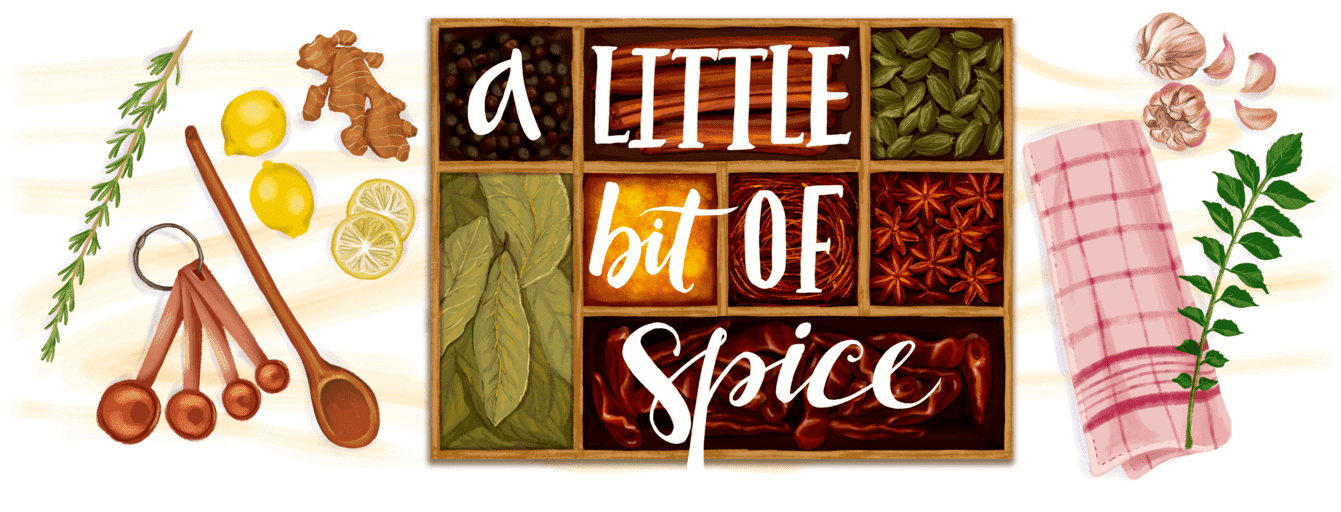





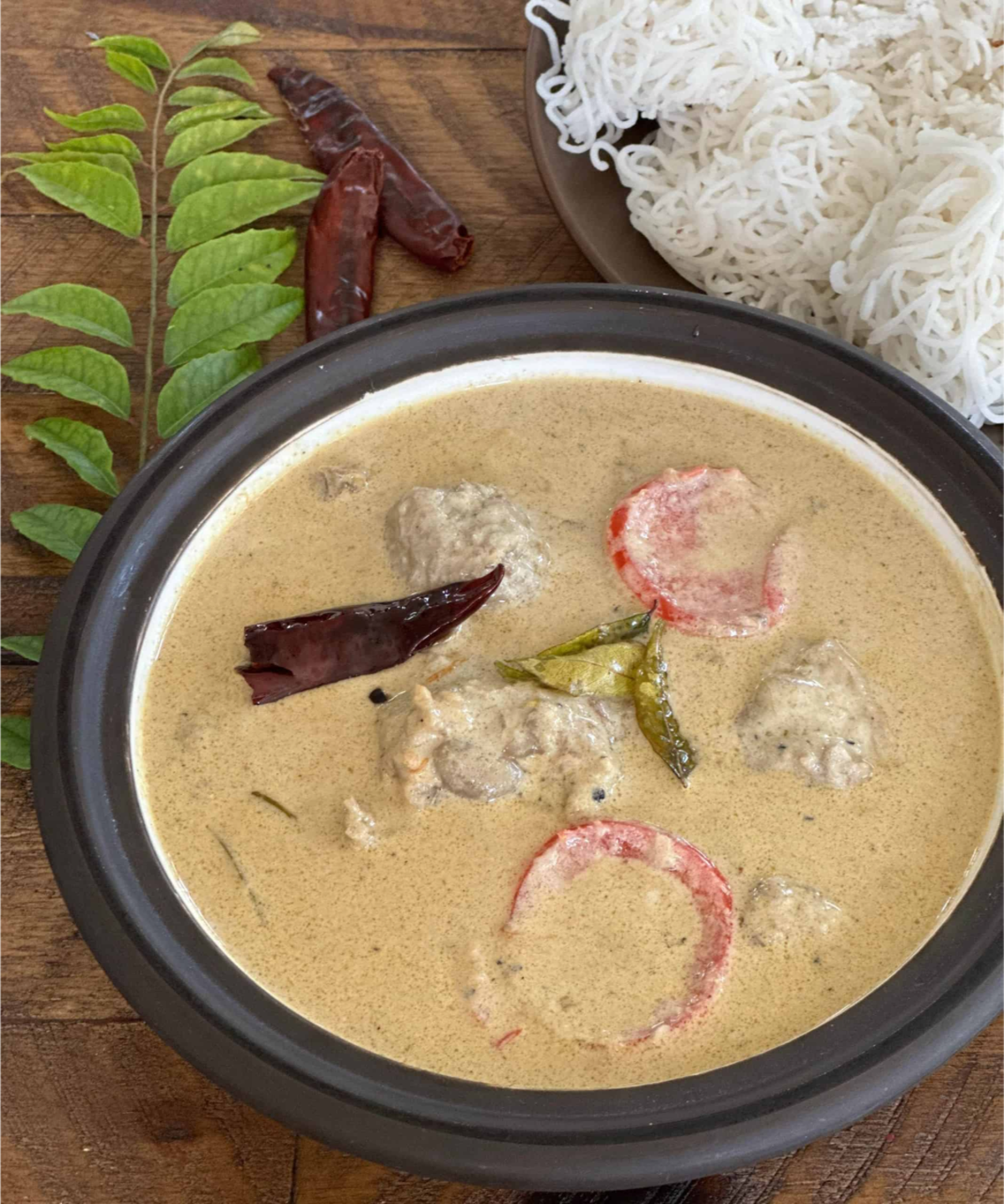
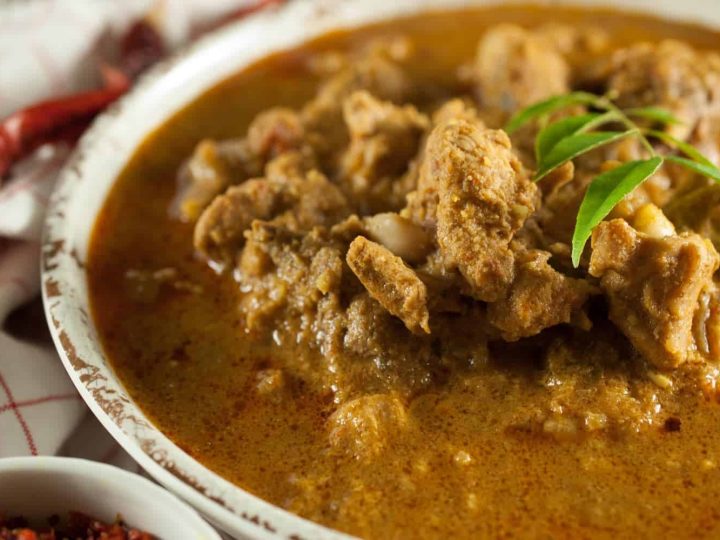

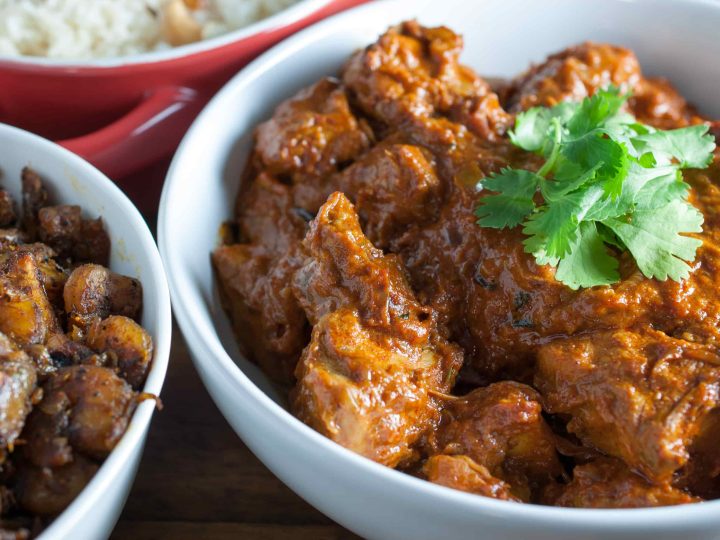
Start the discussion at comments.alittlebitofspice.com